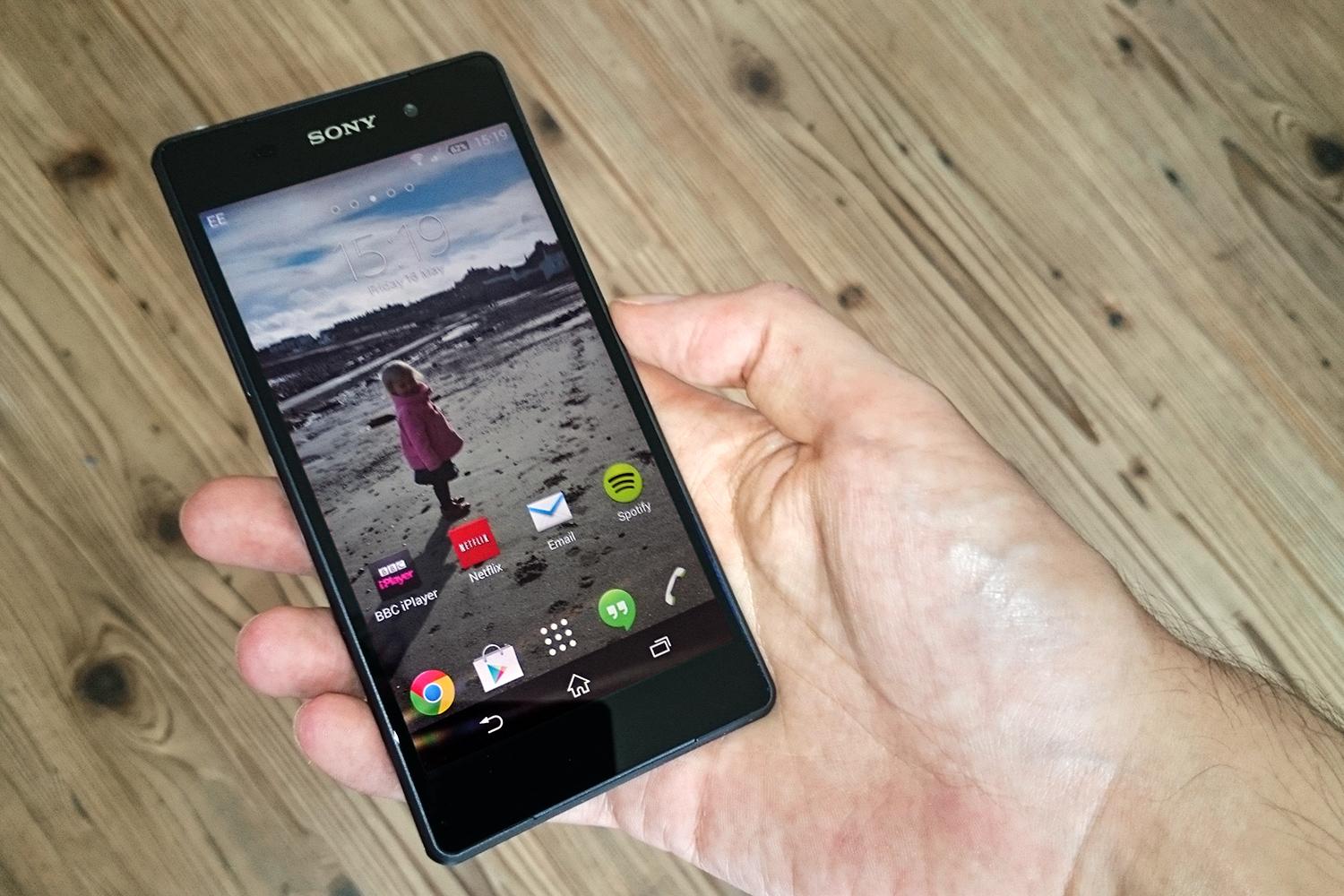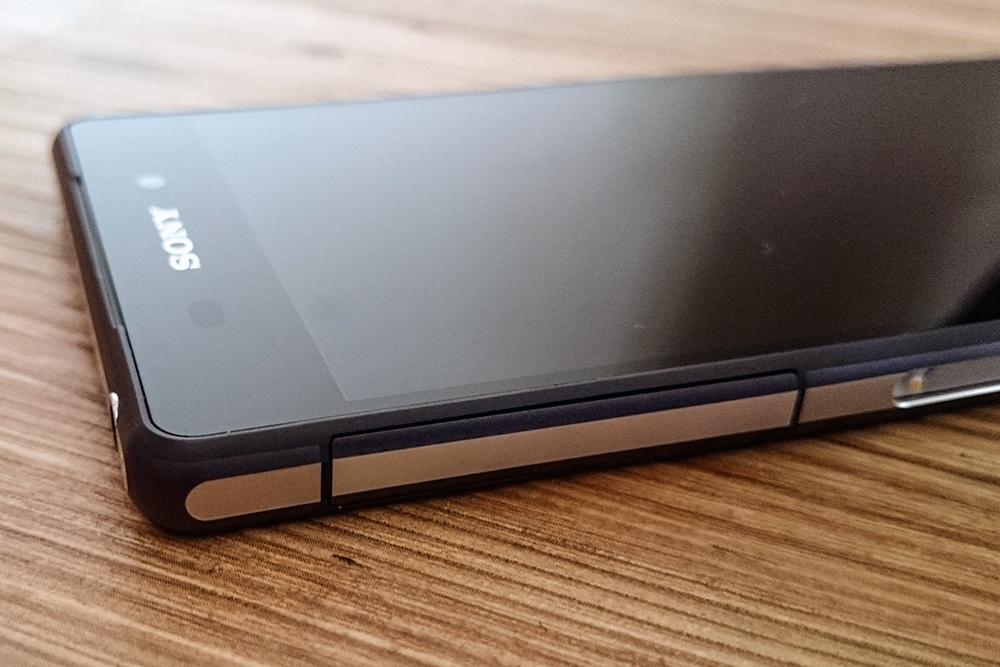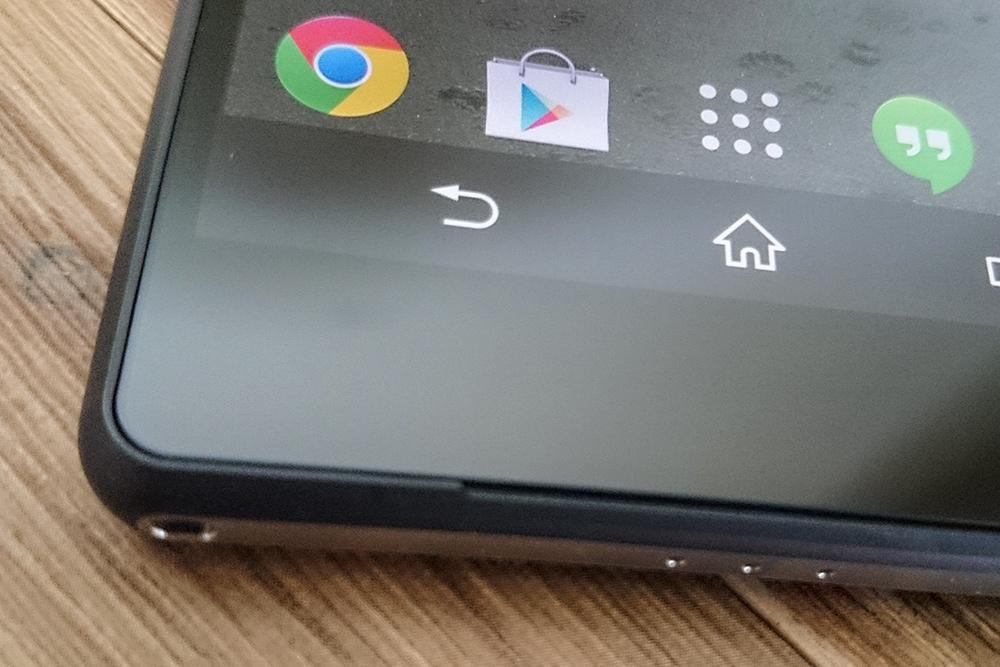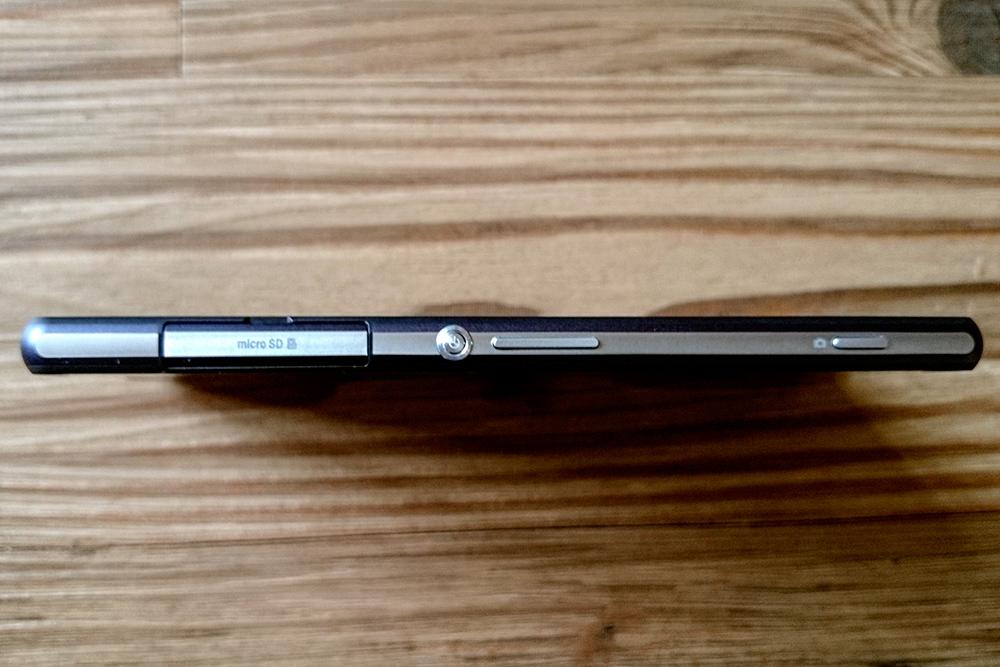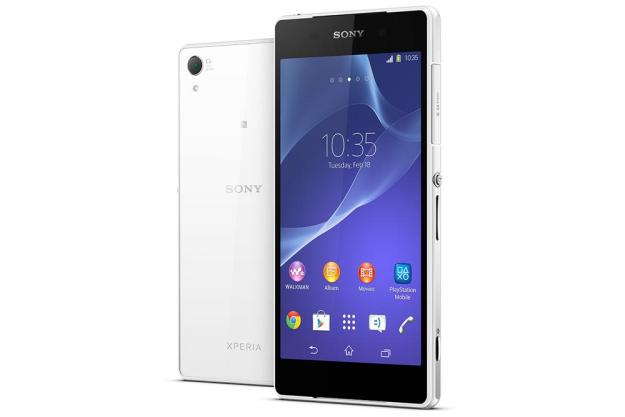
“The Xperia Z2 is Sony’s best release yet and shows how fast its smartphones are improving. This is a phone that can compete with anything on the market.”
- Very fast and powerful
- Gorgeous display
- Premium design
- Waterproof and dustproof
- MicroSD support
- Feature packed camera
- Front-facing stereo speakers
- Battery life
- Fingerprint and dust magnet
- Big bezels above and below screen
- Not especially comfortable to hold
- 4K recording heats up
- Flaps on ports
Sony has been fighting its way into the premium end of the smartphone market by updating its Xperia Z flagship phones every six months. The Z2 is a stylish, feature-packed device with plenty of raw power, but does it have what it takes to nudge LG and HTC aside and chip away at Samsung and Apple’s apparently unassailable lead? It’s time to take a closer look.
It’s Reassuringly expensive, but comfort comes second
The Sony Xperia Z2 was designed to look beautiful from every angle. Sony’s industrial design language is unmistakable in this angular black slab, combining a glass front and back with shiny metallic buttons, and a brushed aluminum frame.
It’s a minimalist look. There are sizable bezels on the front, above and below the screen, which make the Xperia Z2 the tallest of its peers. Sony has put dual front-facing speakers in as well, but you have to look closely to see them. Only the camera and flash at the top left, and the Sony and Xperia logos, intrude on the expanse of black glass on the back.
By contrast, the sides are relatively busy with a MicroSD card flap, power button, volume rocker, and dedicated camera button on the right. On the left side, there’s a flap to conceal the SIM, a Micro USB port, and the magnetic charging connector. The aluminum frame is softened slightly by rounded edges on each panel which give way to darker coated corners.
As gorgeous as it looks, there’s no argument about the comfort factor. The Z2 is less comfortable to hold than the HTC One M8 or the Samsung Galaxy S5. It is also heavier than both of them at 5.75oz (163g). Sony has deliberately placed the power button almost halfway down the right spine, so it’s still possible to operate the Z2 one-handed, but the glass back and hard edges don’t exactly melt into the hand.
The Sony Xperia Z2 looks beautiful at every angle.
You’ll also find that glass is the perfect material for attracting smudged fingerprints and pocket fluff. It’s partly noticeable because the pristine, precise nature of the design seems to magnify anything out of place.
Removing the flap to charge is an irritation, and a good incentive to invest in a magnetic charging dock. The flaps are a necessary evil, though, and they’re worth the hassle for the IP55/IP58 rating, which means you can dunk the phone or fire water at it and it will keep right on ticking.
A minimalist interface, with some useful touches
Sony’s sparse design carries over into the unnamed user interface, which appears to be less intrusive than HTC’s Sense or Samsung’s TouchWiz, but still quite a change from stock Android. The notification shade cleverly splits your configurable quick settings off onto a second tab, so you get a clear view of everything incoming.
The app drawer reveals some bloatware, which will vary according to where you buy the phone. The Sony apps you can expect to find are a mixed bunch. Your standards like Messaging, Contacts, Phone, and Email are decent, and it’s pleasing to see the Chrome browser as the default, but most people won’t be interested in apps like Socialife news, the obligatory mashup of news and social media, or Video Unlimited, where you can rent movies at steep prices. The Walkman app is feature-packed and works well, but if you aren’t signing up to Sony’s Music Unlimited service or loading a big collection onto your MicroSD card then you probably won’t use it, which is a shame.
PlayStation owners will appreciate the PlayStation app, and you can log in using your PSN credentials, but you’ll need a PS4 to enjoy the remote control feature and second screen experiences on supported games. Sony needs to make more of links like this to attract new customers.
The standard Back, Home, and Multitasking buttons are present at the foot of the screen and they melt away when not in use. Sony has tweaked the Multitasking menu by adding some “Small apps” to the bottom of the interface as well. They sit on top of whatever you are doing and you can download more from the Play Store. There’s a calculator, browser, and a few others. The other welcome addition is a Close all button at the bottom.
Sony has also added in a double-tap to wake feature, which is handy for a quick glance at your screen, but sadly a second double-tap doesn’t send it back to sleep.
Overall, the Sony interface looks good and there are some touches that add value without any obvious trade-off in terms of a performance hit. There’s no lag or slow down as you bounce around in and out of apps and scroll through your home screens.
Cutting edge specs
The Sony Xperia Z2 trumps most of the flagship competition when it comes to the specs on paper. There’s a quad-core Qualcomm Snapdragon 801 processor rated at 2.3GHz. You’ll find the same processor in the HTC One M8 and the Galaxy S5, although Samsung does push the clock speed higher. When it comes to
If you’re an audiophile, you’ll love the built-in digital noise cancellation.
When it comes to display, the Z2 has a 5.2-inch, 1920 x 1080 pixel LCD screen. Sony has built its Triluminos and X-Reality technology in, and improved the quality after some criticism of the original Xperia Z display over viewing angles and a pre-applied screen protector. These issues have both been corrected in the Z2 and the picture quality is excellent. Nothing matches the boldness of Samsung’s Super AMOLED, but if you want more realistic colors, then you’ll go for the Z2. The screen protector is now provided in the box as an optional extra.
There’s 16GB of internal storage with around 11GB available out of the box, but the MicroSD card slot can take cards up to 128GB in size.
The main camera is rated at 20.7-megapixels and there’s a 2.2-megapixel front-facing camera. The battery is impressive at 3,200mAh, but it cannot be removed. All the other features you’d expect to find are present and correct, from
Running benchmarks, the Z2 scored 18,251 on Quadrant and 19103 on the 3DMark Ice Storm Unlimited Test. We ran Geekbench 3 for good measure and it scored 929 for single-core and 2727 for multi-core performance. Going by the numbers it doesn’t reach the same heights as the One M8 or the Galaxy S5. Sony probably throttles the speed in return for better battery life and less heat, which is an issue we’ll get to in a minute.
Great audio quality
Before we move on, we have to mention the audio quality. The front-facing S Surround speakers are loud and crisp with a punchy sound that’s really big for a smartphone, though you’ll need to dig into the Sound menu to find the enhancements and equalizer. The high quality helps to make the movie watching experience more immersive and you can enjoy music without needing
If you’re an audiophile, you’ll love the built-in digital noise cancellation, which combines with the earphones provided to deliver noise-free sound. The Sony MDR-NC31EM earphones that come with the Z2 are way better than your average out-of-the-box
A fast and feature-packed camera
With the highest megapixel rating of any current

The camera app has plenty of options, but for most people the Superior auto mode will get best results by automatically detecting your environment and adjusting the settings accordingly. The low light performance is pretty decent, which is good because the flash is overbearing and inevitably leads to over-exposure.
Noise reduction is excellent and you’ll be impressed by the level of detail in most shots. It really shines in a sunny outdoor environment (like most cameras). There are some fun effects, like the odd AR effects that put things like dinosaurs in your photos, and Timeshift burst, which grabs multiple shots and lets you select the best — ideal for fidgety kids. The macro mode is impressive and you can use Background defocus to get great close-up photos with the subject in sharp relief and the background blurred away.
The Z2 does also support

Playback was smooth on the phone, but the back near the camera module was noticeably hot after shooting the video. If
While general camera performance and results were good, processing on some of the effects is slow. You’ll sometimes wonder if it has crashed, but it’s just taking its time processing your image.
All-in-all the main camera stakes a good claim for best camera in an
The 2.2-megapixel front-facing camera is nothing to write home about, but it serves fine for video calls.
Calling is loud and clear
Call quality is extremely good, clear and loud. We had no reception issues during a week of testing. Switching between 3G and 4G doesn’t seem to represent any problems and data download speeds were also good, although this will depend on your local network.
Battery
The biggest bugbear for every
The Xperia’s camera could be the best
Once we settled in to a normal pattern with an hour or so of daily Web-surfing, an hour of gaming, some camera action, and a few calls, messages, and emails, the Z2 kept on trucking for 48 hours before we had to plug it in. That’s doubly good because fiddling the flap open and plugging in the Micro USB is a hassle and you can’t help worrying about the longevity of the flap.
The solution that Sony has provided is a magnetic charging port on the left spine, which allows you to just place it on the optional Sony dock, which costs about $50 (there are third-party options at less than half the price). It’s not as fast as the regular charger, which will juice up your phone from zero to 100 percent in less than two hours.
There are a lot of power-saving modes you can configure and Stamina mode is especially good when you’re out of range of a charger, but it does inevitably disable functions like mobile data and Wi-Fi, and restrict hardware performance.
Conclusion
Committing to a six monthly update cycle means that Sony is improving faster than the rest of the field, and it needed to do that to catch up with the pack. The Xperia Z2 can go head-to-head with any
This is a beautiful and powerful device that justifies the premium price tag. It will be too angular and unwieldy for some people, so a hands-on is advised before you buy. Sadly that might be a problem for Americans because the Z2 hasn’t been officially released stateside. Until Sony begins selling it directly, and carriers like T-Mobile pick it up, you’ll have to import the Xperia Z2. At north of $800, that might be a bridge too far right now.
Highs:
- Very fast and powerful
- Gorgeous display
- Premium design
- Waterproof and dustproof
- MicroSD support
- Feature packed camera
- Front-facing stereo speakers
- Battery life
Lows:
- Fingerprint and dust magnet
- Big bezels above and below screen
- Not especially comfortable to hold
- 4K recording heats up
- Flaps on ports

